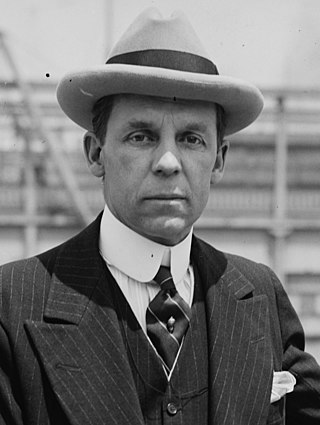Related Research Articles

Berryville is a city in Carroll County, Arkansas, United States. The population was 5,682 at the 2020 census. making it the largest city in Carroll County. Along with Eureka Springs, it is one of the two county seats of Carroll County.

In ancient Greek and Roman architecture, a peristyle is a continuous porch formed by a row of columns surrounding the perimeter of a building or a courtyard. Tetrastoön is a rarely used archaic term for this feature. The peristyle in a Greek temple is a peristasis (περίστασις). In the Christian ecclesiastical architecture that developed from the Roman basilica, a courtyard peristyle and its garden came to be known as a cloister.

Dumbarton Oaks, formally the Dumbarton Oaks Research Library and Collection, is a historic estate in the Georgetown neighborhood of Washington, D.C. It was the residence and garden of wealthy U.S. diplomat Robert Woods Bliss and his wife Mildred Barnes Bliss. The estate was founded by the Bliss couple, who gave the property to Harvard University in 1940. In 1944, it was the site of the Dumbarton Oaks Conference to plan for the post-WWII United Nations.

John Mercer Langston was an American abolitionist, attorney, educator, activist, diplomat, and politician. He was the founding dean of the law school at Howard University and helped create the department. He was the first president of what is now Virginia State University, a historically black college. He was elected a U.S. Representative from Virginia and wrote From the Virginia Plantation to the National Capitol; Or, the First and Only Negro Representative in Congress From the Old Dominion.

Ancient Maya art is the visual arts of the Maya civilization, an eastern and south-eastern Mesoamerican culture made up of a great number of small kingdoms in present-day Mexico, Guatemala, Belize and Honduras. Many regional artistic traditions existed side by side, usually coinciding with the changing boundaries of Maya polities. This civilization took shape in the course of the later Preclassic Period, when the first cities and monumental architecture started to develop and the hieroglyphic script came into being. Its greatest artistic flowering occurred during the seven centuries of the Classic Period.

Woodland is a small residential and industrial neighborhood in Southeast Washington, D.C. Woodland lies in Washington's Ward 8, among the poorest and least developed of the city's wards. Like the neighborhoods around it, Woodland is almost exclusively African American. Woodland is bounded by Ainger Place SE to the north; Alabama Avenue SE and Knox Place SE to the east; Hartford Street SE to the south; and Langston Place SE, Raynolds Place SE, and Erie Street SE to the southwest. Fort Stanton Park forms the northwest and northern border of the neighborhood.

Aztec architecture is a late form of Mesoamerican architecture developed by the Aztec civilization. Much of what is known about this style of architecture comes from the structures that are still standing. These structures have survived for several centuries because of the strong materials used and the skill of the builders. Most civic architecture was concentrated in the center of Aztec cities. However, many cities had smaller supplemental ceremonial areas.

The New Great Migration is the demographic change from 1970 to the present, which is a reversal of the previous 60-year trend of black migration within the United States.

Robert Woods Bliss was an American diplomat, art collector, philanthropist, and one of the co-founders of the Dumbarton Oaks Research Library and Collection in Washington, D.C.

Mildred Barnes Bliss was an American art collector, philanthropist, and one of the cofounders of the Dumbarton Oaks Research Library and Collection in Washington, D.C.

Langston Terrace Dwellings are historic structures located in the Langston portion of the Carver/Langston neighborhoods in the Northeast quadrant of Washington, D.C. The apartments were built between 1935 and 1938 and they were listed on the National Register of Historic Places in 1987.

Lenore Thomas Straus was an American sculptor and author.

The District of Columbia Housing Authority is an independent government agency whose mission is to provide affordable housing to extremely low- through moderate-income households, foster sustainable communities, and cultivate opportunities for residents to improve their lives throughout the eight wards of Washington, D.C.
Lincoln Memorial at Waterfront Park is a statue of Abraham Lincoln, depicted as he would have looked before he became President of the United States. The sculpture of him is bareheaded, seated on a rock with an open law book in one hand and the other in an outstretched, welcoming gesture. The statue is located at Waterfront Park in Louisville, Kentucky. The Lincoln Memorial in Louisville is part of the Lincoln Heritage Trail. The statue and its accompanying bas-relief historical panels were created by American sculptor Ed Hamilton. Landscape design for Waterfront Park was by Hargreaves Associates. The 2006 Kentucky General Assembly authorized $2 million for the memorial, which was supplemented by private donations.

Hilyard Robert Robinson, was a prominent African-American architect and engineer.

Housing in Washington, D.C., encompasses a variety of shelter types: apartments, single family homes, condominiums, co-ops, and apartments considered public housing. Washington, D.C., is considered one of the most expensive cities in which to live in the United States—in 2019, it was ranked in the top 10 of American cities with the most expensive homes.
Charles Simonds is an American contemporary artist and sculptor based in New York. He is best known for his sculptural series titled Dwellings, small clay constructions the artist has been installing in buildings across the world since the 1970s.
References
- ↑ "Legacy Finding Aid for Manuscript and Photograph Collections". Historical Society of Washington, D.C., p. 13. Retrieved November 14, 2022.
- ↑ "Veterans of Dresden". Dresden, NY in Washington County. Retrieved November 14, 2022.
- ↑ "The story of a lady and her unicorn, a statue on the move at Dumbarton Oaks". The Washington Post. Retrieved November 14, 2022.
- ↑ "Berryville Post Office". University of Central Arkansas. Retrieved November 14, 2022.
- ↑ "Langston Terrace Dwellings". The Living New Deal. Retrieved November 14, 2022.
- ↑ "Making Modern Homes: A History of Langston Terrace Dwellings, A New Deal Housing Program in Washington, D.C., p. 147" (PDF). Kelly Ann Quinn, Ph.D., The University of Maryland. Retrieved November 14, 2022.